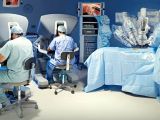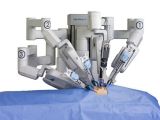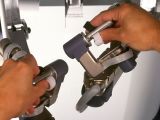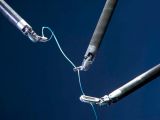Writing in the journal Head & Neck, researchers with the University of California, Los Angeles, detail how, with the help of a robot, surgeons can now not only access tumors previously labeled as inoperable, but also remove them.
The specialists say that this technology, pioneered by Dr. Abie Mendelsohn and his colleagues, is to thank for the fact that doctors can today save patients who, not too long ago, would have had little or no hope to survive tumors growing in tricky areas of the body.
Not all body regions are easy to access
In their paper, the University of California, Los Angeles, specialists explain that the area that sits close to the base of the human skull and that links deep regions of the head and the neck is especially difficult to operate on.
This is because this area, known to doctors as the parapharyngeal space, packs a whole lot of blood vessels, muscles and nerves that, if messed with during surgery, can trigger severe side effects, maybe even lead to the patient's death.
To operate on tumors growing in the parapharyngeal space, surgeons used to either make complex incisions into the patient's neck, or go the extra mile and split their jaw in half in order to be able to part it and thus reach the abnormal tissue growths, Science Daily informs.
Besides, doctors sometimes turned to chemotherapy or radiation therapy to try and shrink tumors developing in this area before actually cutting into a patient and trying to remove them. The thing is that, quite often, chemotherapy and radiation therapy made recovery more difficult.
Successfully removing previously unreachable tumors
Dr. Abie Mendelsohn's and fellow researchers' Trans Oral Robotic Surgery technology, which the US Food and Drug Administration approved back in 2009, makes it possible for surgeons to employ the Da Vinci robotic surgical system to access tumors in the parapharyngeal space.
What this means is that the intervention is actually performed by a surgical robot whose arms can worm their way through the mouth and deep into the parapharyngeal space without upsetting the nerves, blood vessels and muscles in this part of the body.
The robot's arms are forever under the control of the surgeon behind the intervention who, although sitting a few steps from the patient, knows exactly what is happening inside the body. This is because a video camera lets them know what the robot is up to.
It's important to note that, during surgical interventions carried out with the help of the Trans Oral Robotic Surgery technology, the robot's arms mimic whatever it is that the surgeon leading the intervention is doing with their wrists or fingers.
For the time being, this technology is chiefly employed to operate on life-threatening tumors growing in the proximity of a patient's tonsils and tongue. However, the brainiacs who developed it hope that, soon enough, it will be used to remove other types of previously unreachable abnormal tissue growths as well.
“Patients can now be treated in a manner equivalent to that of a straightforward dental procedure and go back to leading normal, healthy lives in a matter of days with few or even no side effects,” Dr. Abie Mendelsohn said in a statement.
“We are tremendously excited about the possibilities for the surgical community with this new advancement of TORS. Now patients have options they never had before, and we can even develop potential applications for the procedure beyond the surface of the head and neck,” he added.

 14 DAY TRIAL //
14 DAY TRIAL // 



